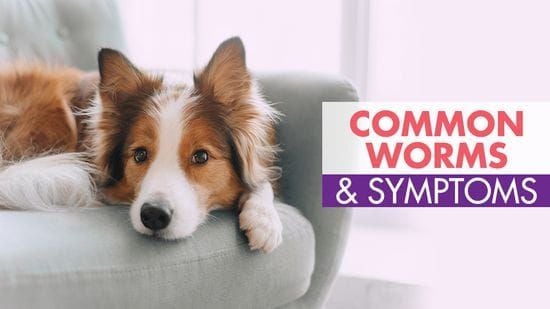Identifying and Treating Intestinal Worms in Dogs
)
Intestinal worms are less common today thanks to preventative treatments, but they still pose a threat to dogs, especially on the Gold Coast. These parasites can cause a range of health issues, from digestive problems to more severe conditions if left untreated.
Understanding the risks and early signs of intestinal worms will help you keep your dog healthy and ensure their well-being.
Common Types of Worms in Dogs
There are four main types of intestinal worms that dogs on the Gold Coast are at risk of contracting. While not as common as they once were, these parasites still require vigilance and regular preventative care.
1. Whipworms
Whipworms are one of the less common intestinal parasites in dogs, but they are still a concern due to the diseases they can carry. These small worms can be hard to detect without careful monitoring.
How to Spot Whipworms in Dogs:
Sudden or unusual weight loss
Diarrhoea or irregular bowel movements
Presence of blood or mucus in the stool
How Dogs Get Whipworms:
Whipworms are contracted when a dog ingests contaminated eggs, usually found in the droppings of infected animals. After ingestion, symptoms can take up to two months to develop.
2. Roundworms
Roundworms are more common and easier to identify than whipworms. They are visible to the naked eye and can be seen in a dog’s stool or vomit.
How to Spot Roundworms in Dogs:
Noticeable weight loss
Diarrhoea and excessive bowel movements
A dull or rough coat
Bloated stomach or abdomen
How Dogs Get Roundworms:
Roundworm eggs are often found in the droppings of infected animals and can also be carried by pests like insects and rodents. Ingesting these eggs leads to roundworm infections.
3. Hookworms
Hookworms are less common but pose a significant risk, especially to younger dogs. These small parasites can be difficult to detect due to their small size.
How to Spot Hookworms in Dogs:
Diarrhoea, sometimes with blood
Lethargy or weakness
Pale gums, a sign of anaemia
Coat discolouration
How Dogs Get Hookworms:
Hookworms are transmitted either through ingestion or when larvae penetrate a dog’s skin. They can also be passed from mother to puppy during pregnancy or through milk.
4. Tapeworms
Tapeworms are unique in their appearance and method of transmission. They cause irritation in a dog’s rear end and can grow quite long.
How to Spot Tapeworms in Dogs:
Scooting behaviour
Excessive licking or biting at the rear end
Segmented tapeworms visible in stool
How Dogs Get Tapeworms:
Tapeworms are usually contracted through intermediate hosts, such as fleas, which carry the tapeworm eggs. When dogs ingest these pests while scratching or biting, they can become infected.
Tips for Preventing and Treating Worms in Dogs
Preventing Worms
- Dogs as young as two to three weeks old can receive treatments to protect against intestinal worms. Regular deworming treatments, as recommended by your vet, are essential for prevention. These treatments may need to be administered every one to three months, depending on your dog’s age, breed, and lifestyle.
Treating Worms
- If you suspect your dog has intestinal worms, it’s important to seek veterinary advice. Parasitic infections can lead to more serious health issues, especially in puppies. Deworming tablets are often an effective solution, but your vet will recommend the best course of treatment based on your pet’s specific condition.
For expert advice and treatment, contact us or book an appointment. Our team is here to provide diagnosis, treatment plans, and preventative care for your dog.
| Tags:Client InformationHealth AdvicePet Safety |
&geometry(322x90))

